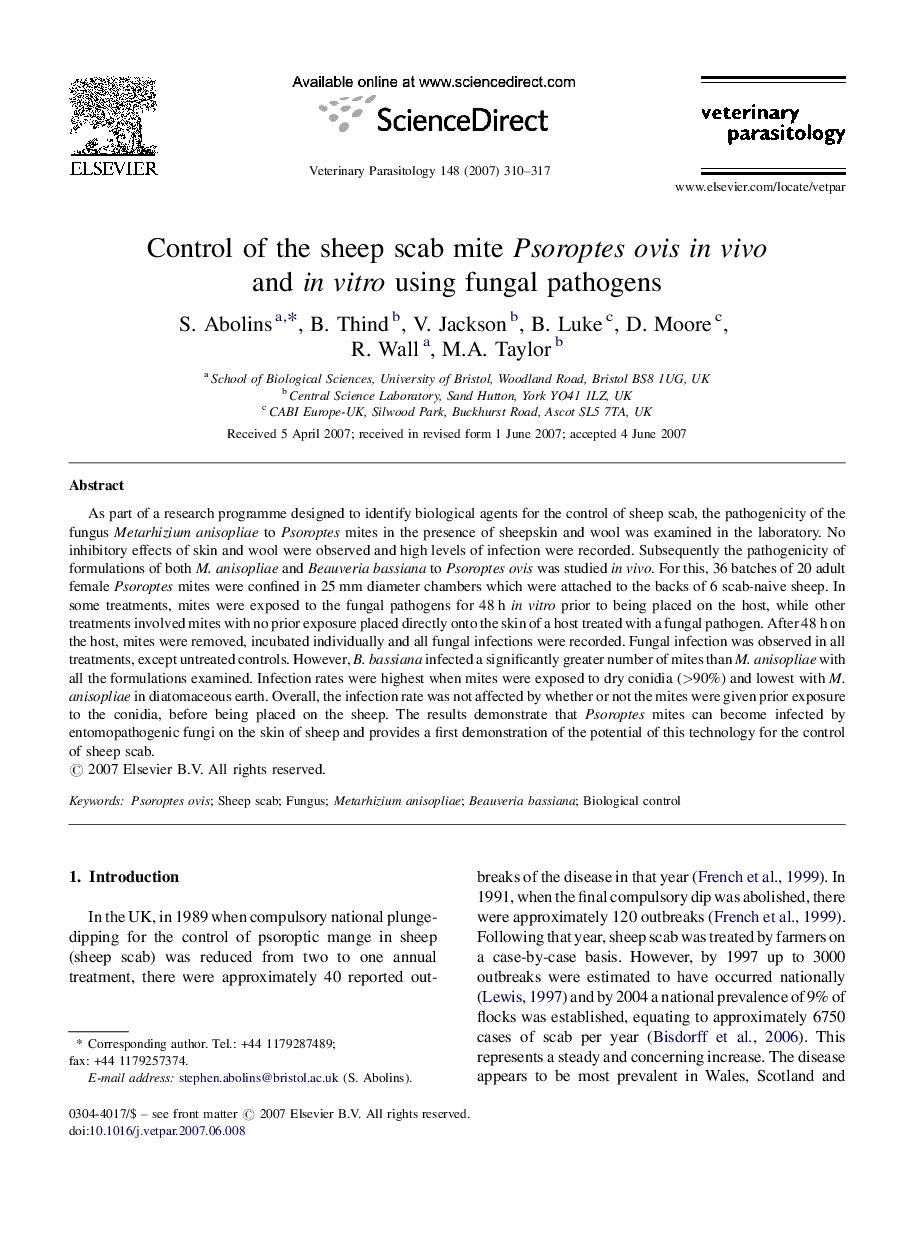| Article ID | Journal | Published Year | Pages | File Type |
|---|---|---|---|---|
| 2472028 | Veterinary Parasitology | 2007 | 8 Pages |
As part of a research programme designed to identify biological agents for the control of sheep scab, the pathogenicity of the fungus Metarhizium anisopliae to Psoroptes mites in the presence of sheepskin and wool was examined in the laboratory. No inhibitory effects of skin and wool were observed and high levels of infection were recorded. Subsequently the pathogenicity of formulations of both M. anisopliae and Beauveria bassiana to Psoroptes ovis was studied in vivo. For this, 36 batches of 20 adult female Psoroptes mites were confined in 25 mm diameter chambers which were attached to the backs of 6 scab-naive sheep. In some treatments, mites were exposed to the fungal pathogens for 48 h in vitro prior to being placed on the host, while other treatments involved mites with no prior exposure placed directly onto the skin of a host treated with a fungal pathogen. After 48 h on the host, mites were removed, incubated individually and all fungal infections were recorded. Fungal infection was observed in all treatments, except untreated controls. However, B. bassiana infected a significantly greater number of mites than M. anisopliae with all the formulations examined. Infection rates were highest when mites were exposed to dry conidia (>90%) and lowest with M. anisopliae in diatomaceous earth. Overall, the infection rate was not affected by whether or not the mites were given prior exposure to the conidia, before being placed on the sheep. The results demonstrate that Psoroptes mites can become infected by entomopathogenic fungi on the skin of sheep and provides a first demonstration of the potential of this technology for the control of sheep scab.
